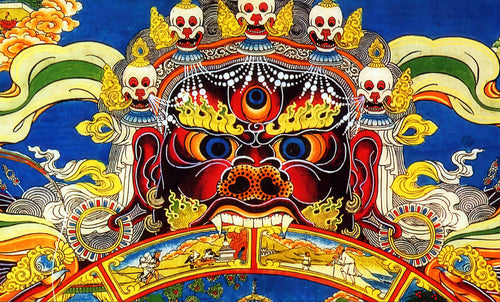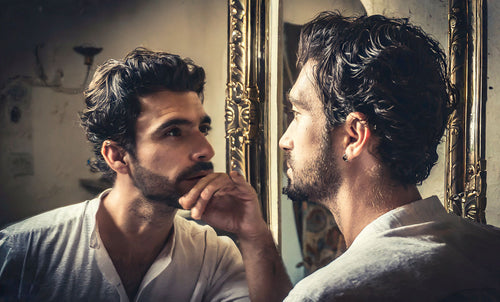
A permanent culture
Rocco FontanaAbout land food earth knowledge
Navigare Necesse Est, Vivere Non Necesse
We have to sail, we do not have to live,
“Sailing is More Important than living”
Ancient latin motto
Leonardo Anfolsi interviews Pietro Zucchetti the founder of the Italian permaculture institute.
Pietro, first of all, I salute your ongoing work in preservation of an agriculture and culture of the territory which is not only sustainable, but also advanced and which keeps on improving fuelled by your inexhaustible spirit devoted to the research.
It seems to me that even the concept of “organic” or “biologic” is already past its time... Or are they two different contexts?
I believe that they are two different concepts. Permaculture is a permanent culture in the sense of a permanent cultivation of our human territory, that is, our bodies including our psychology and the physical territory that we call land. Permanent because we achieve permanent health of our bodies and permanent health of our landscapes through the design of eco systems satisfying our needs and our wants. Needs intended as the vital functions needed to survive. Wants are the desires that fulfil our lives. All this, existing within our values. We always design a life with everything around us clear and clean. Like water, that must be free of additives like chlorine or others chemicals. In fact ,our first source of water is rain, the purest and the easiest to clean up through filtering. At home I drink rainwater filtered by silver and ceramic filters. Because we design ecosystems, we don’t pollute: natural ecosystems are closed, loop systems: the waste will become our resources, fuelling the system in which we live. So we live a sustainable way of life, more independent, taking us towards human freedom. It is a long time committment.
Nowadays, organic is just a food production with less pesticides and mineral fertilizers, nothing more.
My next three questions concern with what I am most interested among your activities.
What brought you to collect so many certifications regarding permaculture ?
First of all, I wanted to learn this fantastic practice and to know those very knowledgeable permaculture experts that can be an inspiration to me. Secondly, I wanted to be credible here in Italy where many people are turning permaculture into something that it is not. Also, to be able to teach permaculture we need a very extensive experience. I have learned that we teach what we practice, we walk our talk.
Is there something already happening elsewhere so fast that is able to create its own form of sharing and training?
Not elsewhere, but here and now, and that is permaculture. Permaculture as we teach it is already integrating cooperation and has already developed its own form of education. Indeed we, as the Permaculture Institute of Italy, have a network of students that come together to collaborate after courses. As a form of education, it is very peculiar because is using some very new types of pedagogic systems like action learning, basic system thinking, cooperative education, multiple intelligences, Steiner education and many other systems.
Can you explain the concept of earthship?
The earthship concept was developed in the seventies by Michael Raynolds, an american architect. The earthship means a ship that sails within the earth. This means that it is like a ship because it is self sufficient in collecting and cleaning rainwater, catching and storing energy like the sun’s energy through solar panels with its storages in form of batteries, like wind with wind turbines. It is built using waste materials like car tyres, glass and plastic bottles, mud as plaster and all sorts of reused materials. Also, it uses passive intake from the solar system to increase temperature by at least 3 degrees celsius by catching the sunshine through a green house, where it is possible to cultivate food.
Is this a system through which houses can be built at a low price or with easy terms of payment?
Not necessarily, the cost would be similar to a normal house because of the labour involved but once it has been built there are no bills to pay: it is self sufficient and produces its own food.
Suppose I have a little garden and some land around, let’s say half hectare. What would be your counsel, and what will we learn?
Our counsel as Permaculture Institute of Italy will be to provide a client with a questionnaire to understand first the situation of the land and that of the client. We are dealing with a holistic discipline so we have to include everything we need in our design and implementation service, i.e. the landscape we are going to design but also who is going to use the land: owners, associations, the public, children, animals etc. We also evaluate the boundaries and the environment beyond the boundaries of the land. We design sustainable systems that imitate nature; a system is made by elements that interact with each other having different outcomes, the boundary of the system like a cell or a wall and finally the environment beyond the boundaries. We also understand the limiting factors that can be a problem for the implementation of the project itself. By observing and interacting with the client we determine the needs and wants within the customer life values. Therefore we can make a lots of mistakes on paper but not on the land. This means less mistakes and more efficiency on energetic level. In fact,the design is meant to reduce the possibility of errors. The result will be an agroforestry system based on perennials where annual crops are cultivated among perennials. We use the resilience of perennials to mitigate the risks and uncertainty of annual crops.
What is the difference between the normal management of the coppice woodland, cleaning itself by producing firewood, and the management designed by permaculture?
The difference is that the coppice woodland remains uncovered for a period of time where it will establish a different ecosystem while the trees regrow. Permaculture management will use, for example, continuous cover and selective felling. So the ecosystem will not change at all, it will be a permanent ecosystem. Probably also using animal traction machinery for timber extraction.
Can we say that in your work you are following the inspiration of Masanobu Fukuoka?
Absolutely. What we are doing stems from Fukuoka philosophy of life. Fukuoka introduced a prolonged observation of nature before doing anything to reduce the mistakes coming from the trial and error practice. Permaculture introduced the design coming from prolonged observation of nature and continuing the analysis of what we observed for a long time in nature, the design, that is: positioning the elements of the system carefully using different design tools, the implementation, positioning the most important elements that can help the thriving of other elements, maintenance of the system with maintenance planning and finally while maintaining the system we will monitor it and when we find out something dysfunctional we correct it, giving a different design to the problem detected. This is a characteristic of a cybernetic self regulating organism, basically a bullet proof ecosystem where humans are a part of it, together with all the other elements.

How can we create a-forest garden in our backyard?
A forest garden originates from the tropical family gardens that was implemented in the backyard of a house. It is a practice that might have originated some 200.000 years ago, connected with the concept of the garden of Eden. Apparently it was started by people gathering and collecting food from the tropical forest in East Asia. After consuming their food they threw away the leftovers fruit seeds and skins of the fruits, behind the house where there were already waste materials including humanure. These waste materials worked as fertilisers and the seeds started to germinate creating a young forest made only of the food selected from the forest creating a forest garden or food forest, that is the same thing. Probably,the most ancient kind of agriculture. So, to create a forest garden in our backyards we have to think first what kind of food we like, what kind of legumes we want to fertilize the garden with: for example eleagnus, alnus spp., maggiociondoli, etc. Try to establish three levels of plants like big trees (apples, cherries, pears, plums etc.), small trees (peaches, pomegranates, medlars etc.), big and small bushes (hazelnuts, goumi, goji, blackberries, raspberries, tayberries etc.), herbs (lavender, rosemary, thyme, sage, ecc.), root vegetables (carrots, potatoes, sweet potatoes, garlic, perennials onions, Jerusalem artichokes, etc.), ground cover plants (clover, false strawberries, etc.) and finally climbers plants that climb on big and small trees (grapes, kiwi, etc.). Also in the forest garden medicinal plants could be introduced fibers (fibrous?) plants, sugar maple trees and many other plants which are not edible. The only thing to understand is that a forest garden is our only habitat!
Thank you, Pietro, your commitment is extraordinary and commendable.
Thank you, Leonardo. I would like to dedicate this interview to L. that is so near to me, even if living far far away, in a distant galaxy. Thank you again.

Leonardo Anfolsi
















































